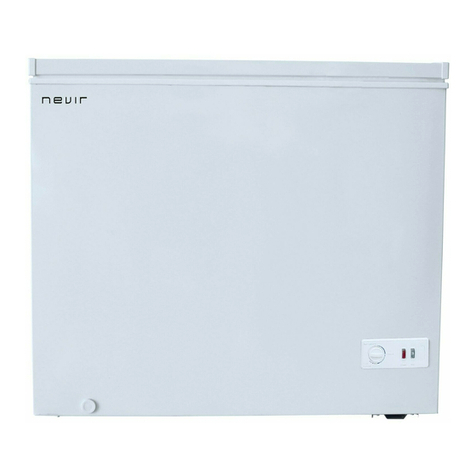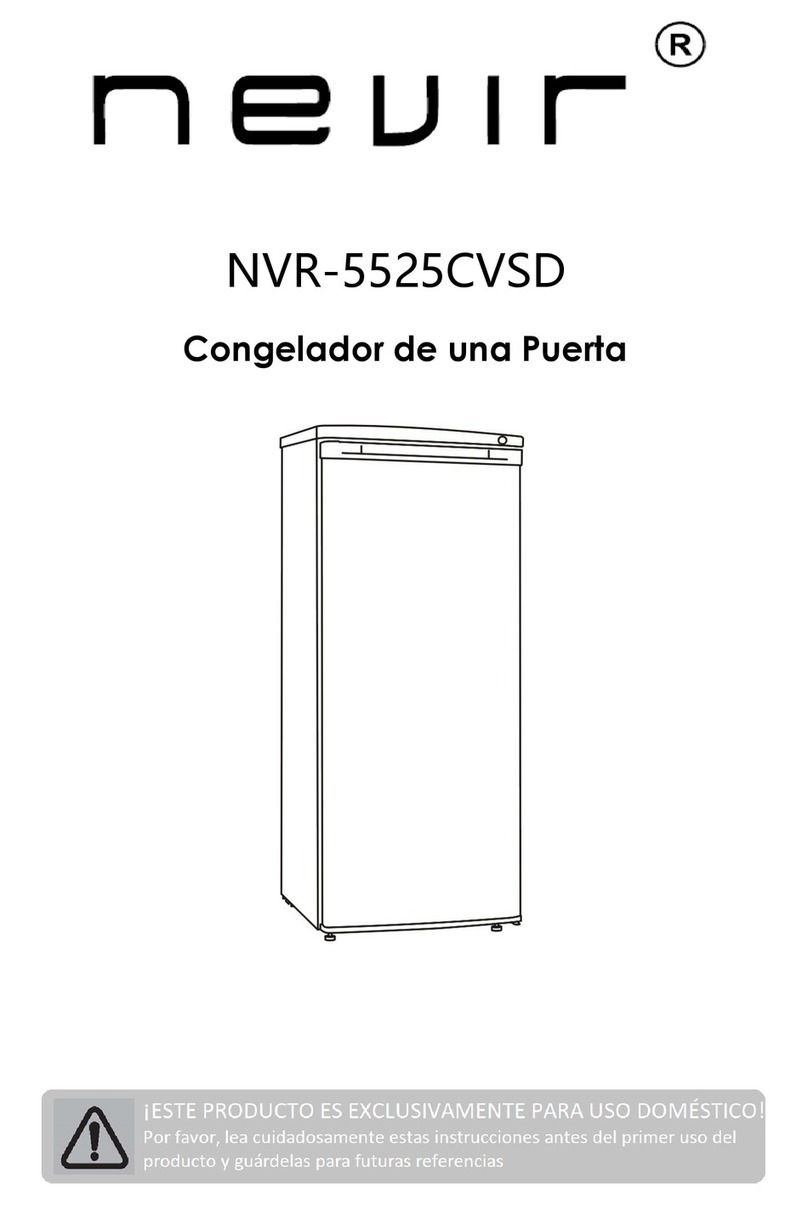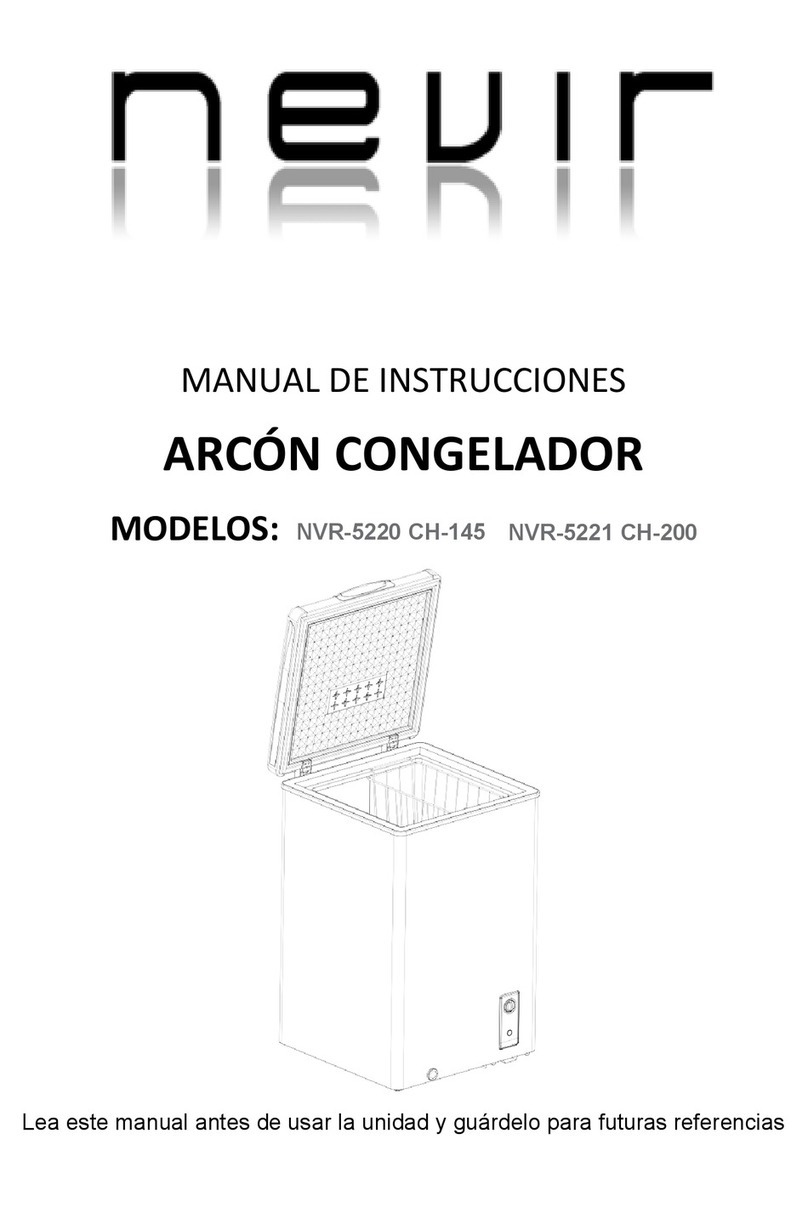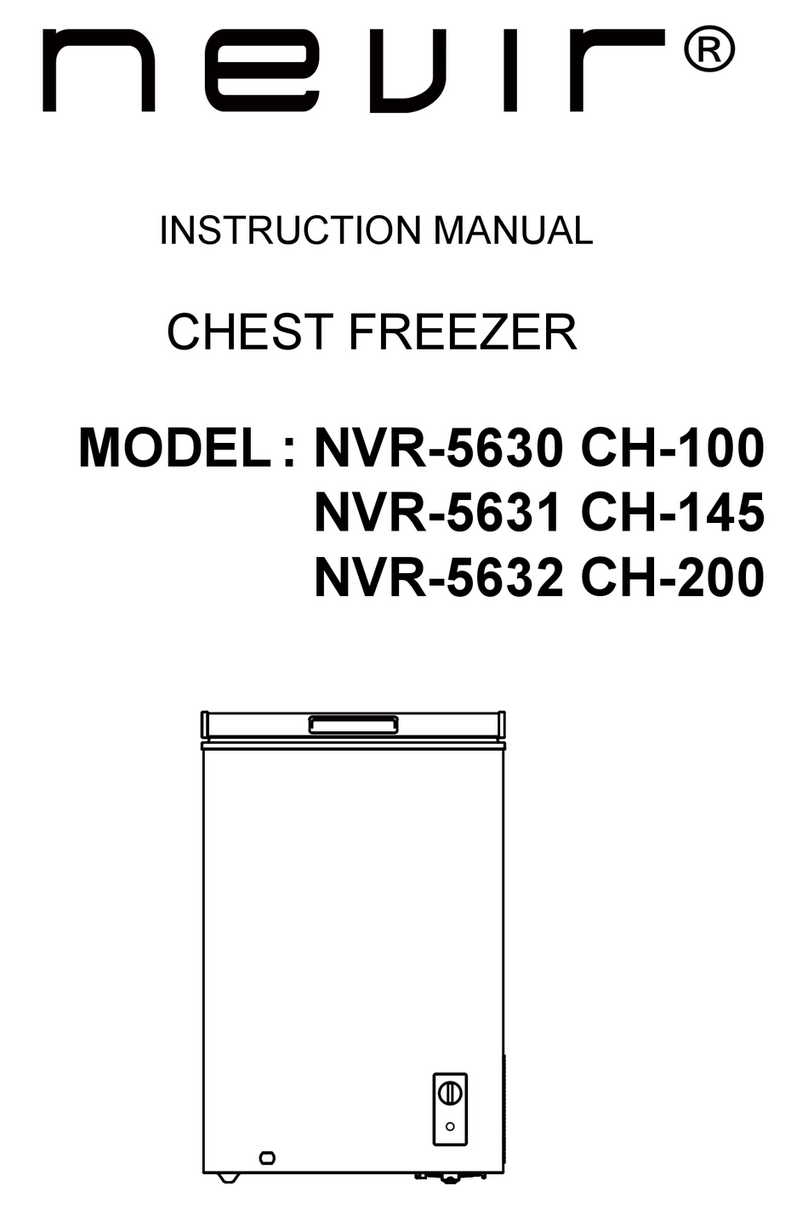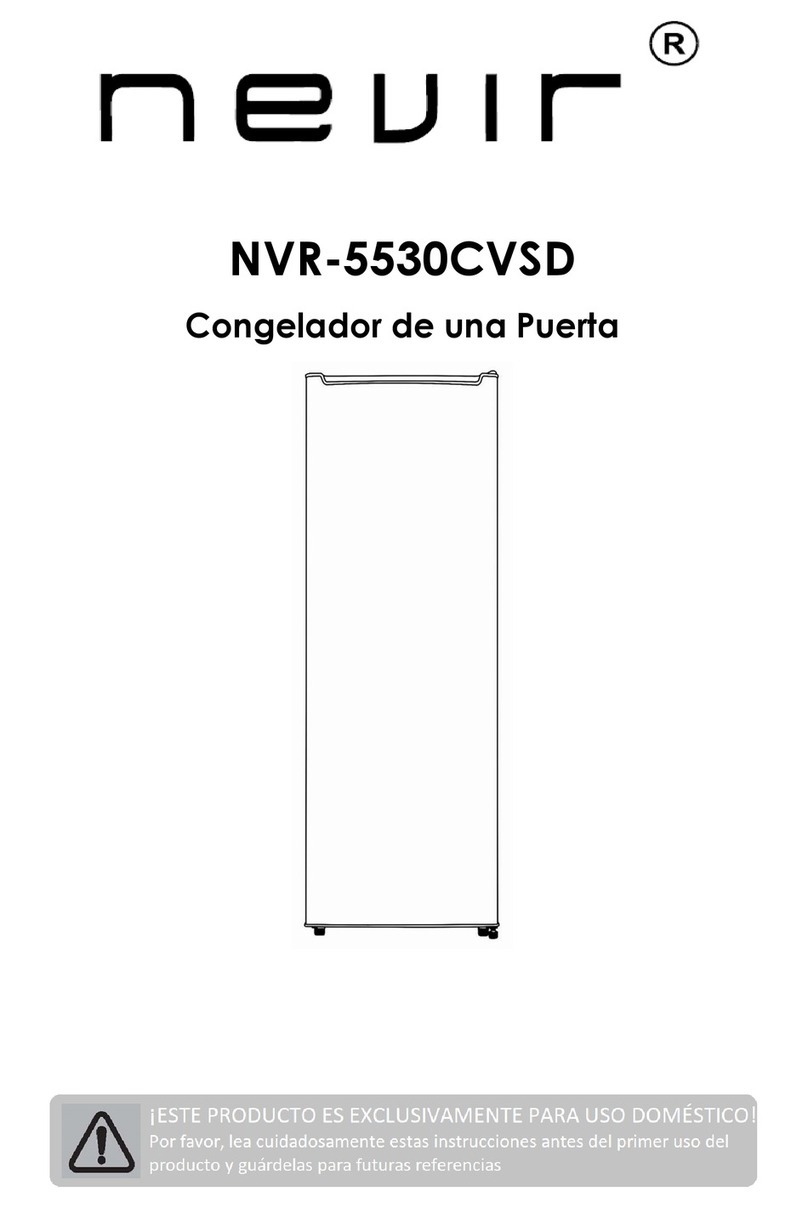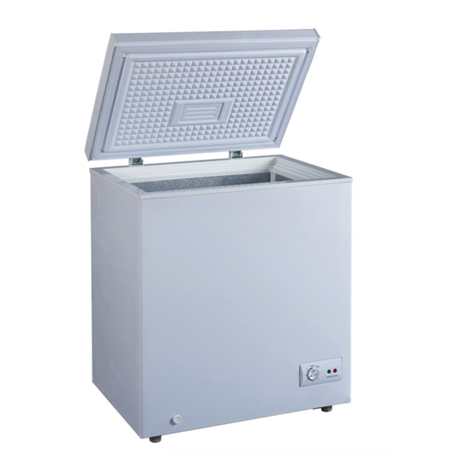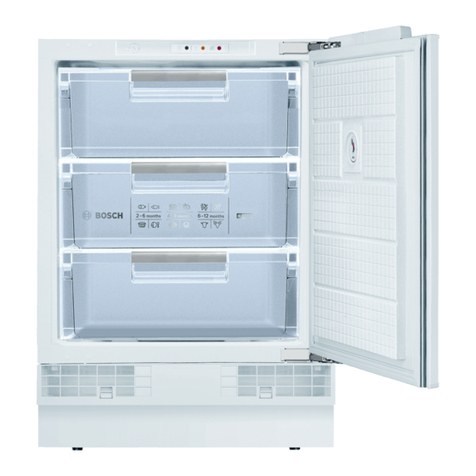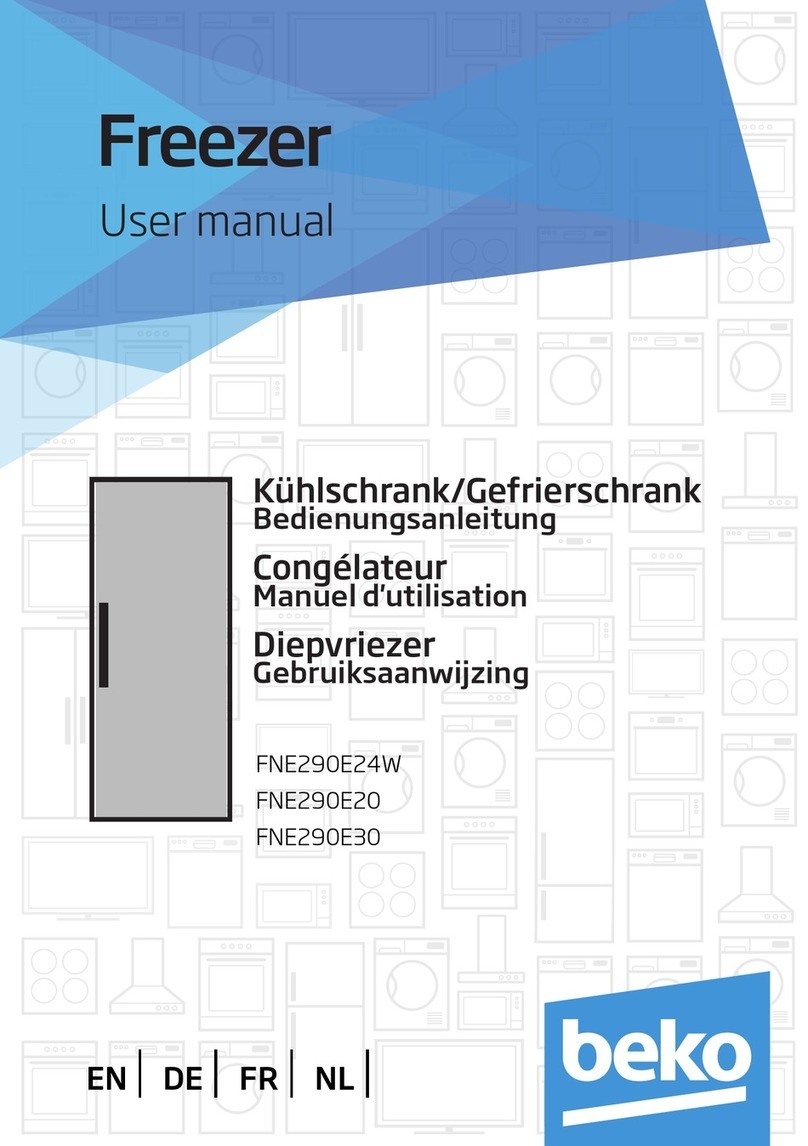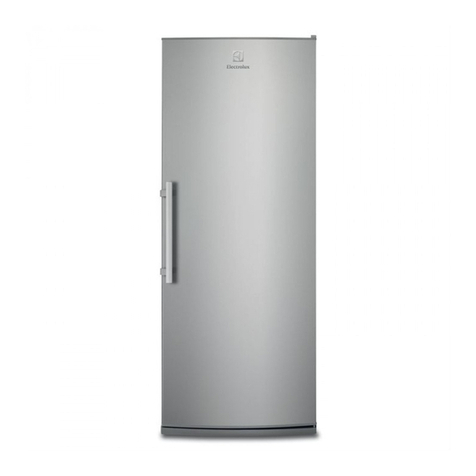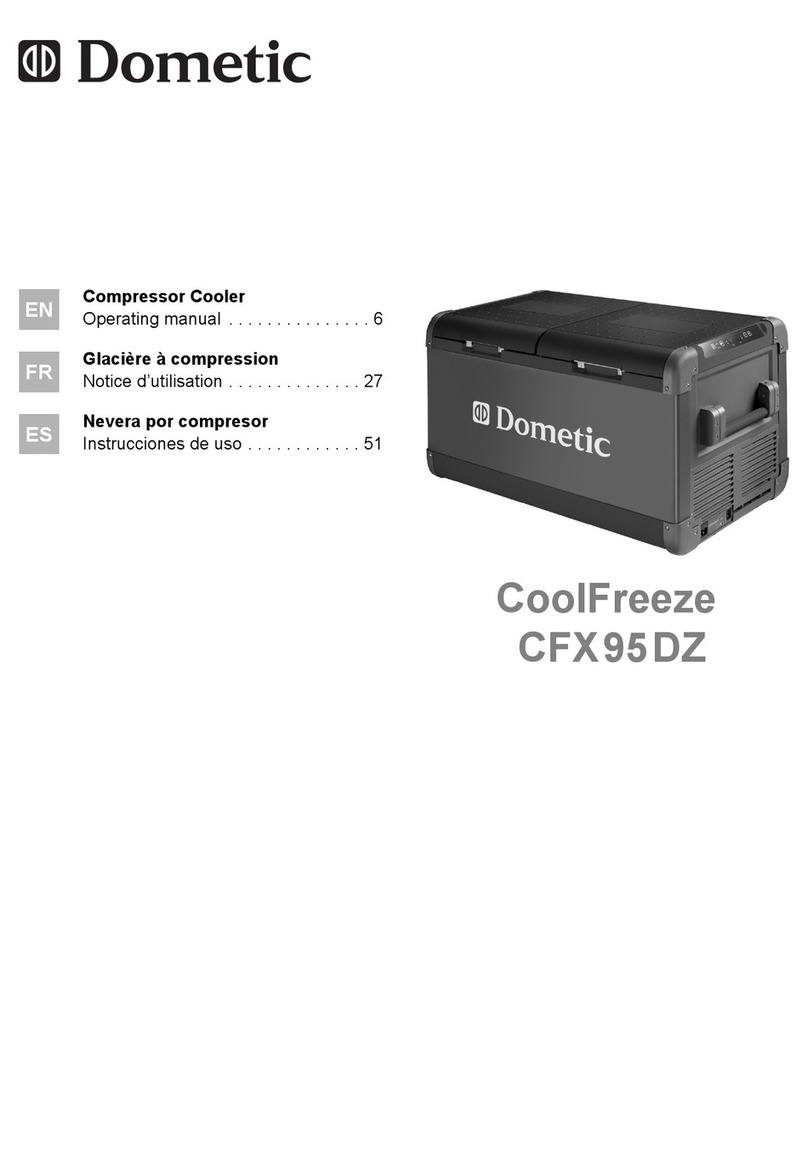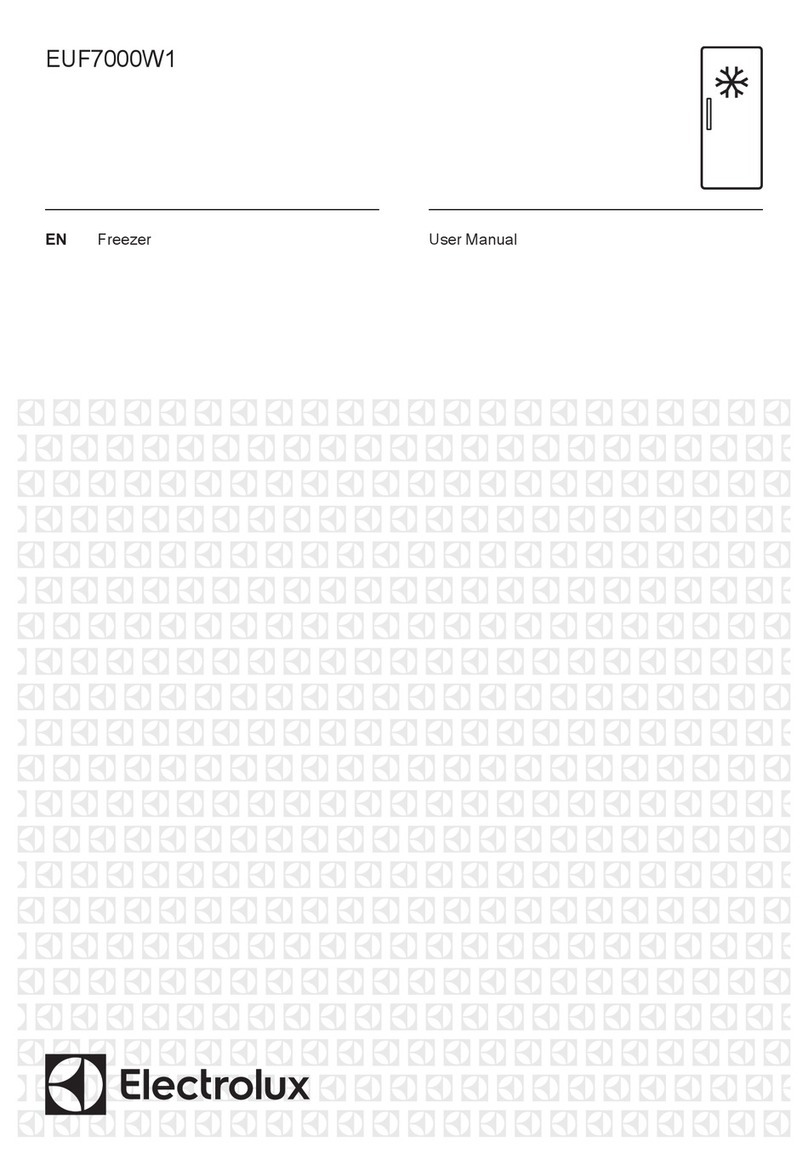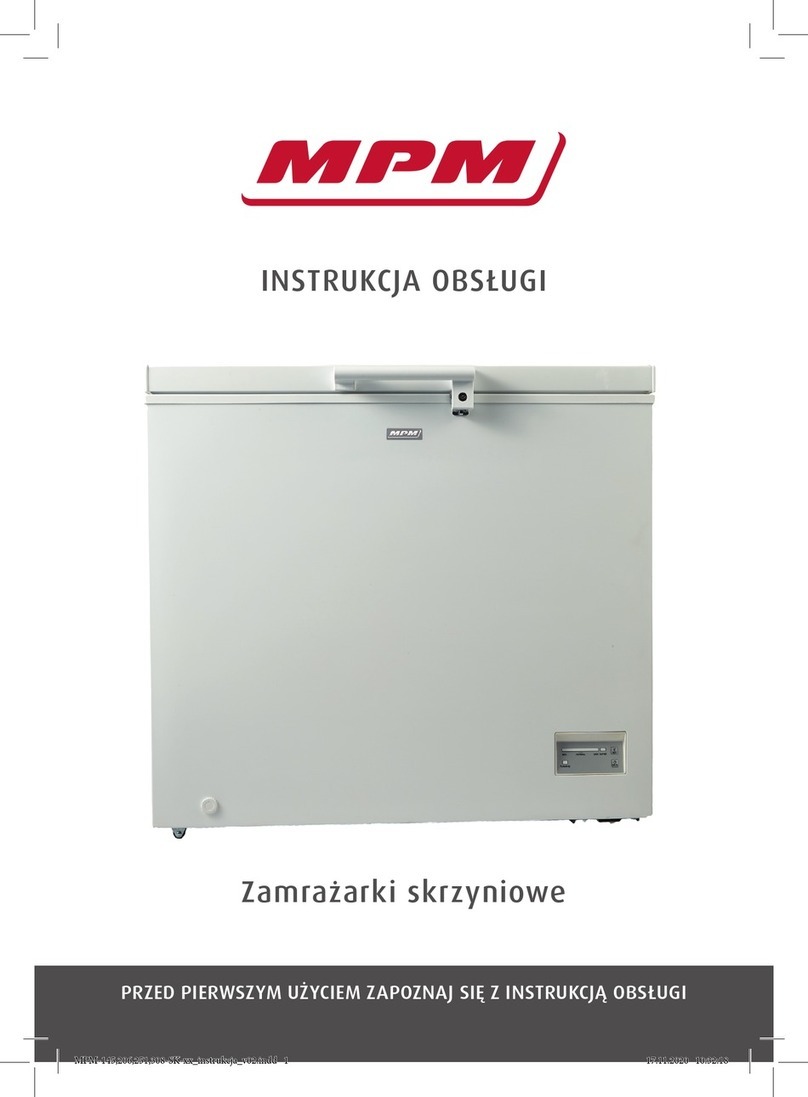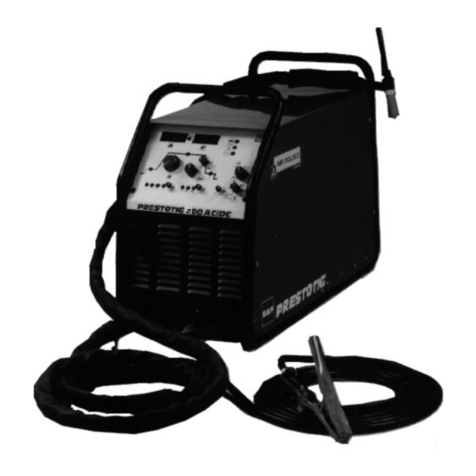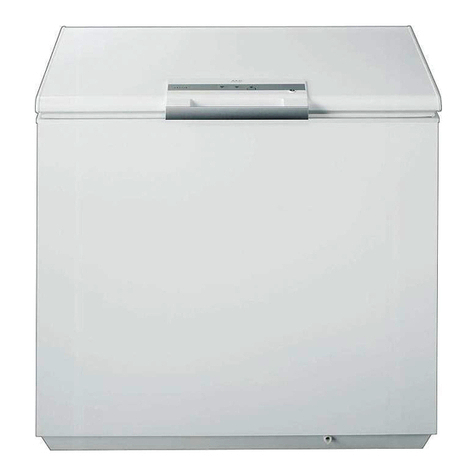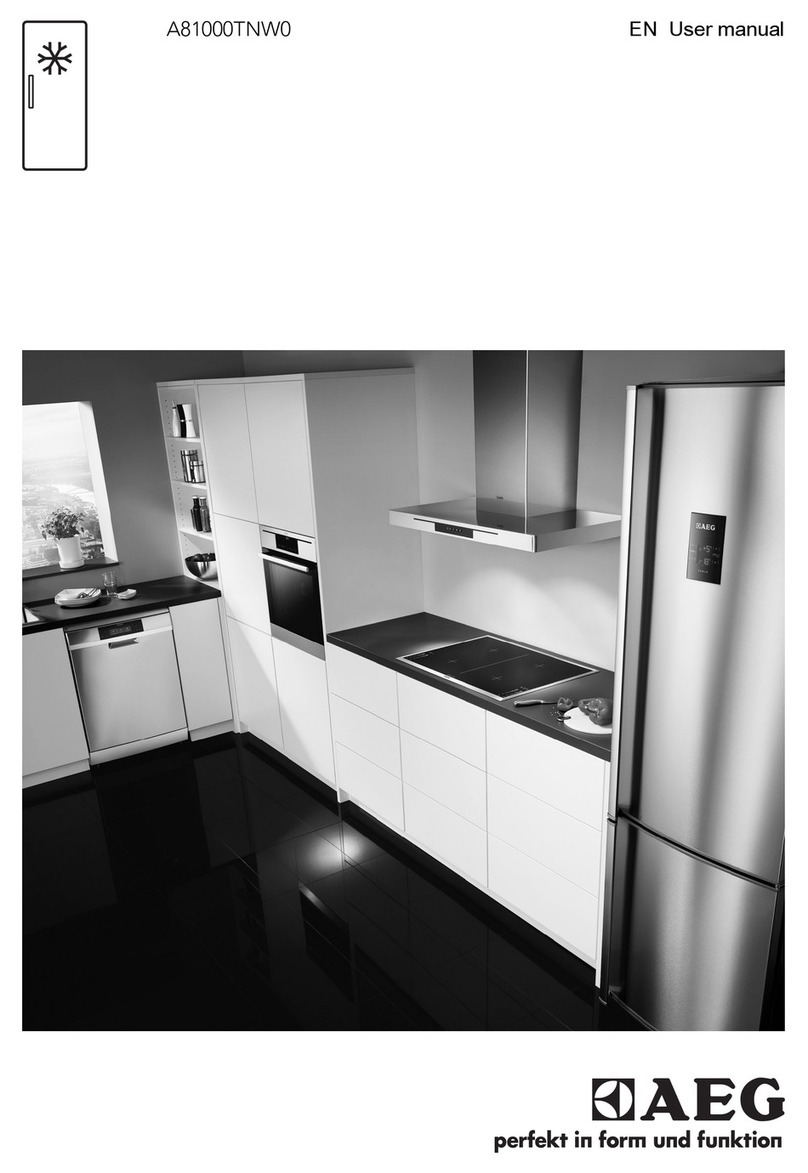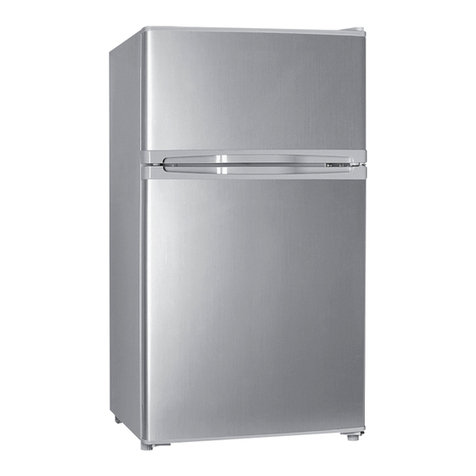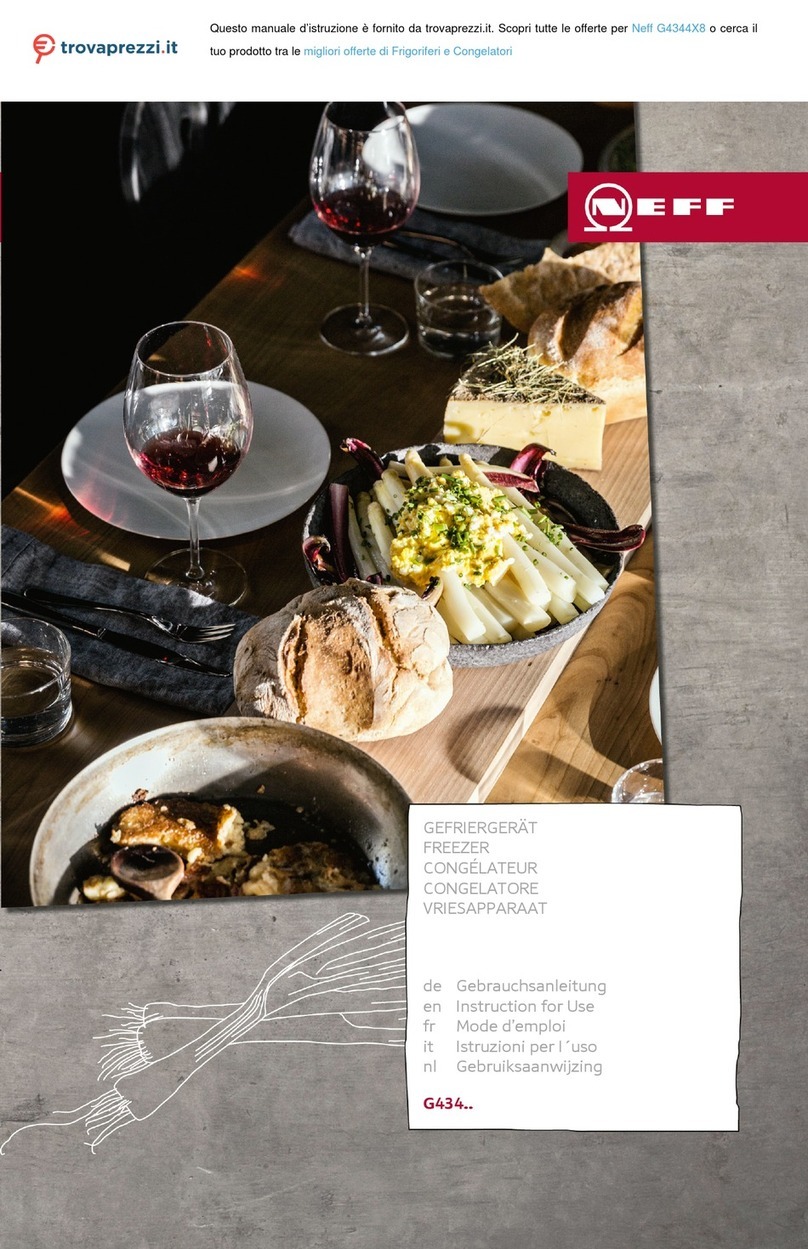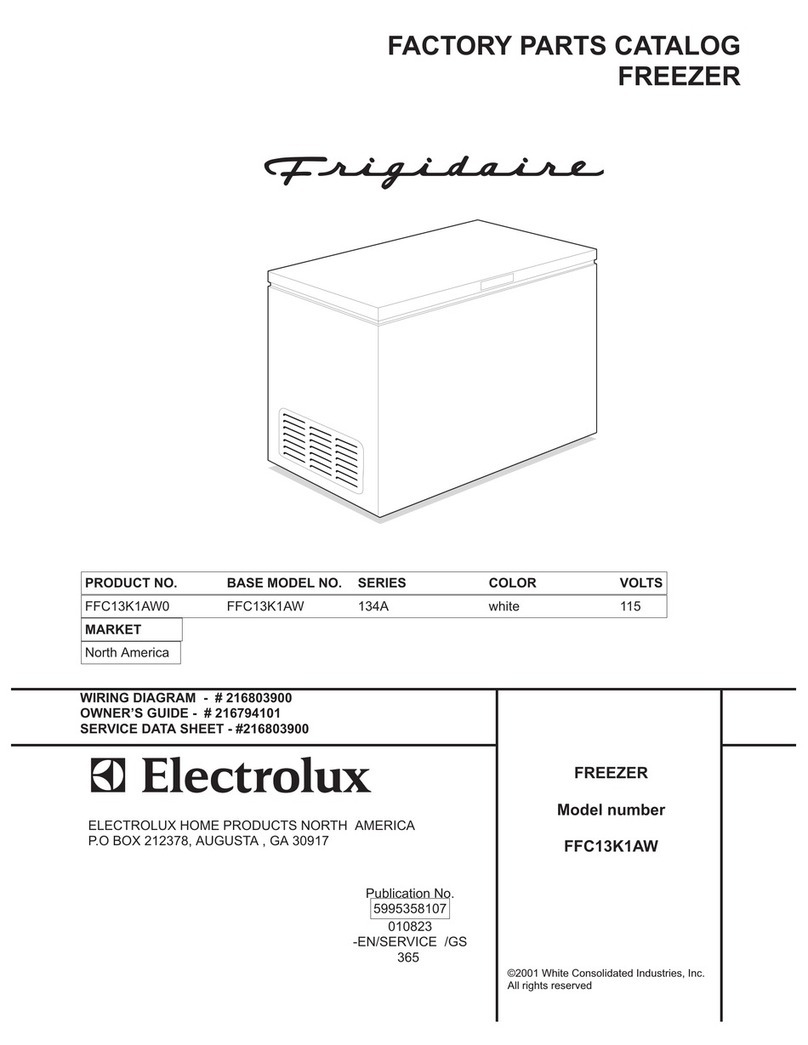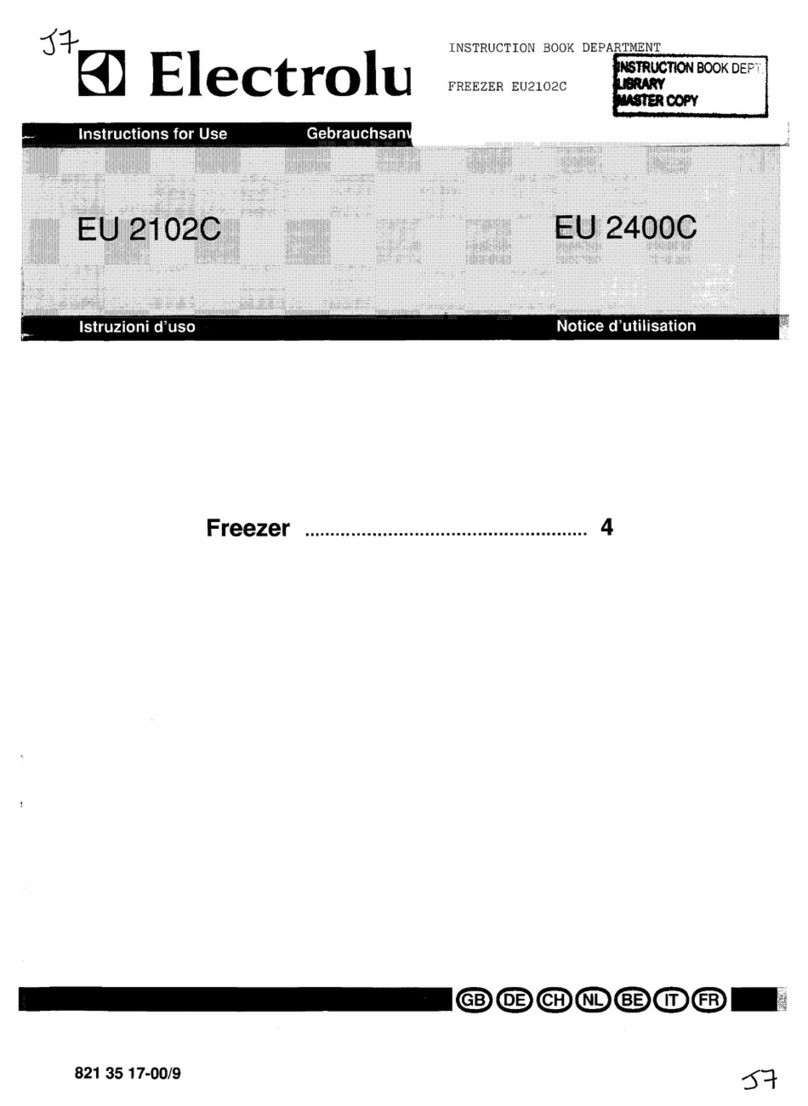
English
4
•Make sure that all repairs and servicing are only carried out by a qualified technician. Always
disconnect the appliance from the electrical mains in case of breakdown and maintenance,
when changing light-bulbs or during cleaning. Never defrost using electrical devices or steam
cleaners. Never remove frost or ice with sharp items, as this may cause irreparable damage
to the walls of the refrigerator.
•Never attempt to move the refrigerator by pulling on the door or the handle.
•Never store liquids in cans or glass containers in the freezer compartment, especially if they
contain added carbon dioxide. Never store products containing gases, flammable
propellants or explosive substances in the freezer. There is always explosion hazard!
•The use of electrical appliances (such as ice-cream makers or whisks) inside the appliance is
forbidden.
•To ensure the refrigerator operates correctly, never obstruct or cover the air ducts in any
way.
•Never touch frozen products taken straight from the freezer or put them in your mouth.
There is burn hazard due to the very low temperatures.
•Never eat or drink foods which look or smell strange.
•This appliance can be used by children aged from 8 years and above and persons with
reduced physical, sensory or mental capabilities or lack of experience and knowledge if
they have been given supervision or instruction concerning use of the appliance in a safe
way and understand the hazards involved. Children shall not play with the appliance.
Cleaning and user maintenance shall not be made by children unless they are older 8 years
and supervised.
•Children must be supervised to ensure that they do not play with the appliance.
•In case of electricity blackout, open the door(s) as little as possible. Once partly or completely
thawed, frozen foods must not be re-frozen.
Intended use
•This compressor-freezer unit is designed for deep-freezing and long-term storage of deep-
frozen food, as well as for making ice-cubes.
•Refrigeration appliances are classified into certain climate classes. Please refer to the
product data sheet for information on the classification for this unit.
•This appliance is intended for domestic or similar applications, such as in:
-shops, offices and other similar working environments,
-agricultural areas,
-hotels, motels etc. and similar establishments,
-bed and breakfast type environments.
•This appliance is not intended for commercial use, nor for use in the catering business or
similar wholesale environments.
Warming: The manufacturer declines all responsibility for injury or damage
caused by failure to comply with the above regulations or deriving from
tampering with even just one part of the appliance and the use of non-original
spare parts.
